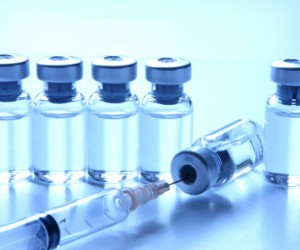 Gardasil, the vaccine used for preventing HPV that can cause cervical cancer and genital warts is now approved for boys.
Gardasil, the vaccine used for preventing HPV that can cause cervical cancer and genital warts is now approved for boys.
Gardasil was initially marketed for girls age 9 to 26 to protect against 4 strains of HPV, or the human papillomavirus. HPV is contracted by engaging in any sort of sexual activity. There are currently at least 100 known HPV viruses but this vaccine targets types 6, 11, 16 and 18: 16 and 18 are targeted against cervical cancer, and 6 and 11 aganist genital warts. The vaccine was originally approved in June of 2006 and since has been approved for additional indications including vaccination against vaginal and anal cancers.
Gardasil received approval for prevention of genital warts for boys and men in October of 2025 and approval against anal warts and prevention of anal cancer in October of 2025. The vaccine does give boys and men immunity to HPV type 16 and 18 that cause cervical cancer. Obviously, men cannot contract cervical cancer, but they can pass the strains of HPV to their female partners unwittingly. Men and women can both be carriers of these viruses so having both genders vaccinated is essential to reduce the virus from spreading.
The Gardasil vaccine is identical for boys and girls and is administered by injection into a muscle, such as the deltoid or upper arm. It is divided into 3 separate doses separated by 2 months. Side effects from the vaccine are usually injection site related like swelling, muscle pain and redness. These can be managed with over the counter pain medication and ice packs. Patients are usually observed for about 15 minutes after the injection to monitor them for allergic reactions and possible fainting. Gardasil is deemed safe for everyone except those with a bleeding disorder or who might be pregnant. Studies so far have shown immunity up to month 24 after the initial dose. More post-marketing research will have to be done to determine if a booster dose will be needed down the road.
 The administration age has been pretty controversial. It is recommended to give the vaccine before boys or girls become sexually active, so the average starting age is nine, with a cut-off age of twenty-six. We’d like to think as parents that our children are not sexually active, but think about it this way: What about your 23-year old daughter who decided to wait until marriage and develops cervical cancer from HPV? Treatment for cervical cancer can include a hysterectomy which would eliminate the possibility to have children in the future. Being a mom as well as a pharmacist, I would not want to take that joy away from anyone. I would also not want my daughter or son to have to deal with the stigma of genital warts.
The administration age has been pretty controversial. It is recommended to give the vaccine before boys or girls become sexually active, so the average starting age is nine, with a cut-off age of twenty-six. We’d like to think as parents that our children are not sexually active, but think about it this way: What about your 23-year old daughter who decided to wait until marriage and develops cervical cancer from HPV? Treatment for cervical cancer can include a hysterectomy which would eliminate the possibility to have children in the future. Being a mom as well as a pharmacist, I would not want to take that joy away from anyone. I would also not want my daughter or son to have to deal with the stigma of genital warts.
As our health system begins to focus more on preventative medicine, I think Gardasil should be viewed the way all other vaccinations are in a child’s immunization series. If you can reduce the risk of yourself or your child having cancer or genital warts I think it should be in your power to make sure you or your child receive it. Educating ourselves and our children is important so stressing the importance of safe sex with condoms, abstinence or both will help minimize the chance of someone contracting or passing HPV.
Also Read:
